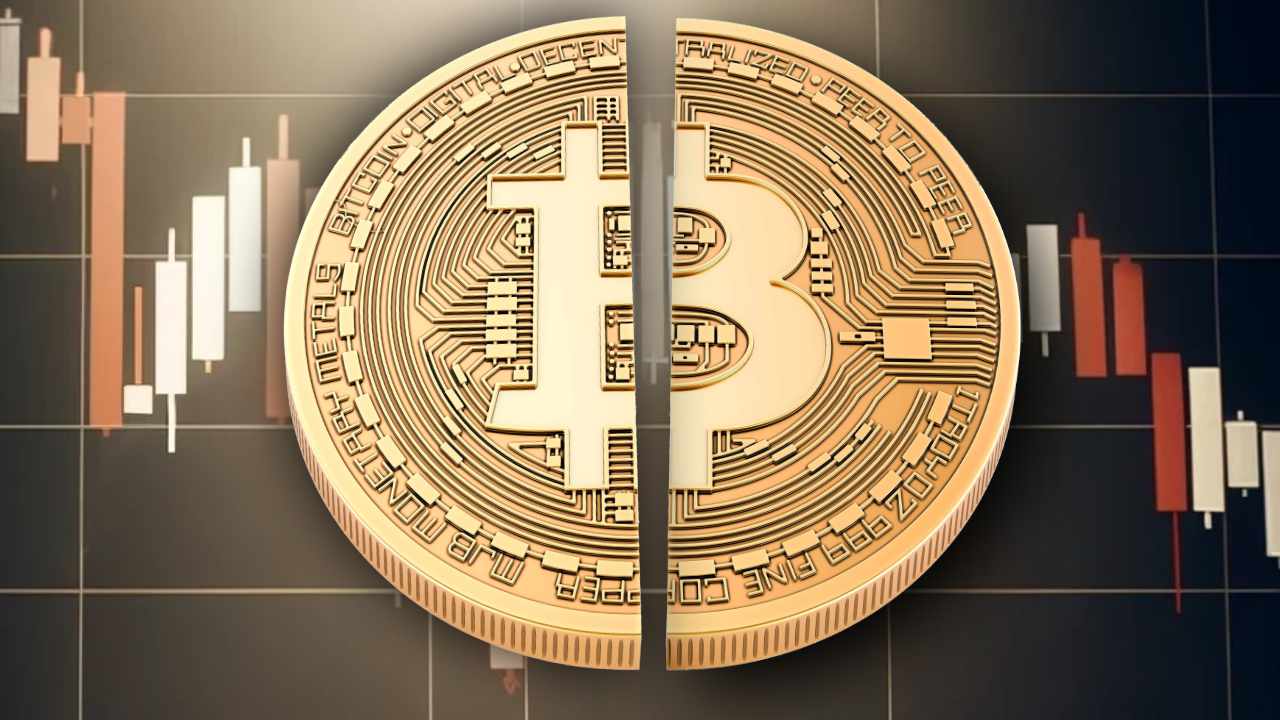
“Bitcoin Halving: Mechanisms and Implications Explained
Among the many events shaping the world of cryptocurrencies, the splitting of Bitcoin in half stands out as a significant market development. This event, which happens roughly every four years, is an important one for cryptocurrency advocates.
“At Bintense, we use the latest technological tools and robust security measures to maintain a reliable cryptocurrency exchange platform. Our users can effectively exchange leading cryptocurrencies such as bitcoins with us in a convenient and secure environment.
In this article, we will reveal what Bitcoin halving is and why it is important in cryptocurrencies.
Halving Bitcoins: Definition and genesis of halving
In essence, halving Bitcoin means that the Bitcoin mining reward is halved every 210,000 blocks, or approximately every four years. This event, which is at the heart of the Bitcoin mining algorithm, aims to curb inflation and maintain the rarity of the cryptocurrency by gradually reducing the number of new coins entering the network. The theory goes that if the rate of issuance of new bitcoins decreases while demand remains the same, the price should increase. This system aims to maintain the value of bitcoins in the long term, while turning a halving of bitcoins into a major event in the cryptocurrency calendar.
Initially, miners received a reward of 50 BTC for each block in the blockchain, which gradually decreased over time. The halving will continue until the maximum supply of 21 million bitcoins is reached, a limit set by Bitcoin’s creator to ensure that the cryptocurrency remains rare and valuable.
“The Bitcoin halving mechanism
Now let’s see how this halving actually happens. This process is deeply rooted in the blockchain technology that underpins Bitcoin. Miners use high-performance computers to solve complex mathematical problems, which in turn validate transactions and add new blocks to the blockchain. For every 210 000 blocks mined, the reward for mining new blocks decreases by 50%. This not only increases the complexity of mining, but also reduces the rate of production of new bitcoins, thereby supporting the deflationary principle of bitcoins.
A study on the link between Bitcoin semi and price
The halving of the price is the main topic of discussion when it comes to the price of Bitcoin. As mentioned above, some analysts argue that a reduction in the supply of BTC should lead to an increase in prices if demand remains unchanged. This belief stems from the basic economic principle of supply and demand: If demand remains constant and the supply of a commodity decreases, its price tends to increase. However, the bitcoin market is highly volatile and fluctuating, so it is difficult to determine exactly how the price of bitcoins is affected by events half as big.
Note that since Bitcoin’s inception, there have already been three halving of its value:
- 28 November 2012: the reward per block was reduced from 50 to 25 bitcoins.
- 9 July 2016: the reward was reduced to 12.5 bitcoins per block.
- 11 May 2020: the last reward cut halved the reward to 6.25 BTC per block.
The next halving of the reward for mining bitcoins is scheduled for mid-April 2024, when the reward per block will be reduced from the current 6.25 bitcoins to 3.125 bitcoins. This event is being watched religiously by cryptocurrency enthusiasts as it could have significant consequences for the future of BTC.
As a trusted cryptocurrency exchange platform, Bintense is committed to providing its users with a secure, efficient and transparent trading environment. Just ahead of the upcoming halving event, our platform is ready to make it easier for our customers to explore cryptocurrencies such as Bitcoin and ensure that they are able to make a confident and intelligent move.
